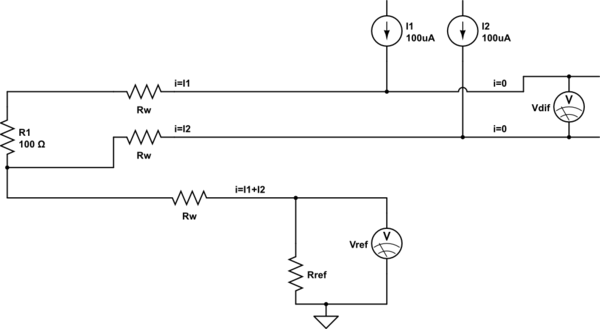I am using a three wire RTD100 as a temperature sensor.
I know the advantage of the 3 wire RTD100 is that it gives accurate temperature output by canceling the lead resistance. First the resistance between line RED (R1) and BLACK (R2) is measured the total resistance is R1 + R2 + RE and then the resistance between line BLACK (R2) and BLACK(R3) is measured. All three wires have the same resistance i.e R1=R2=R3 therefore we will have to subtract (R2+R3) from (R1 + R2 + RE) to get an accurate temperature value.
I researched about the circuits that I can use with 3 wire RTD100. A Wheatstone bridge is used to find the resistance change in the RTD100.
Circuit 1:
In the above circuit, the wire resistance of the RTD100 is labelled as RW1, RW2, RW3. I understand that the change in resistance will unbalance the Wheatstone bridge. The output nodes of the Wheatstone bridge are given to the difference amplifier where we get the voltage output corresponding to the change in temperature, but I am not understanding how the Wheatstone bridge and the difference amplifier is canceling the lead resistance.




